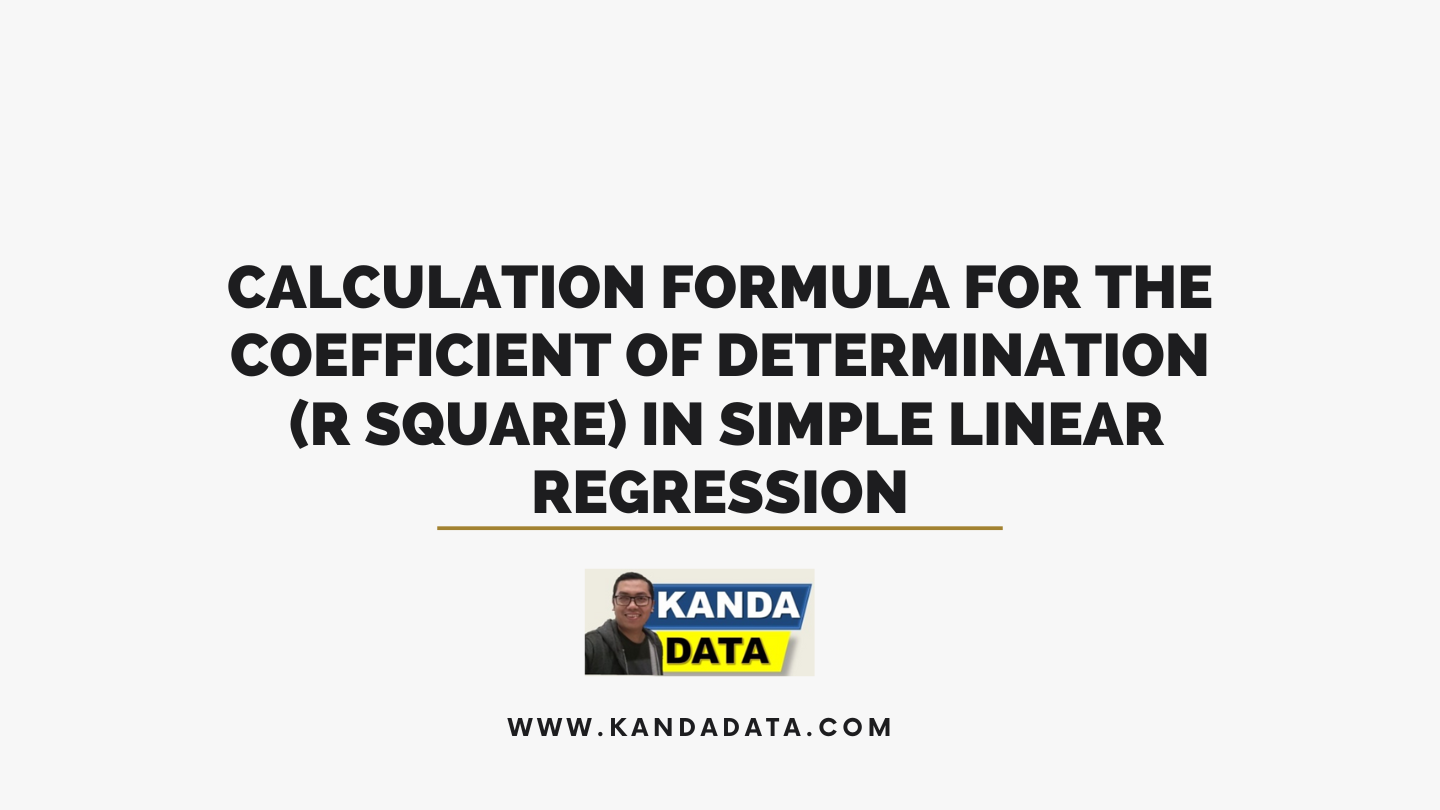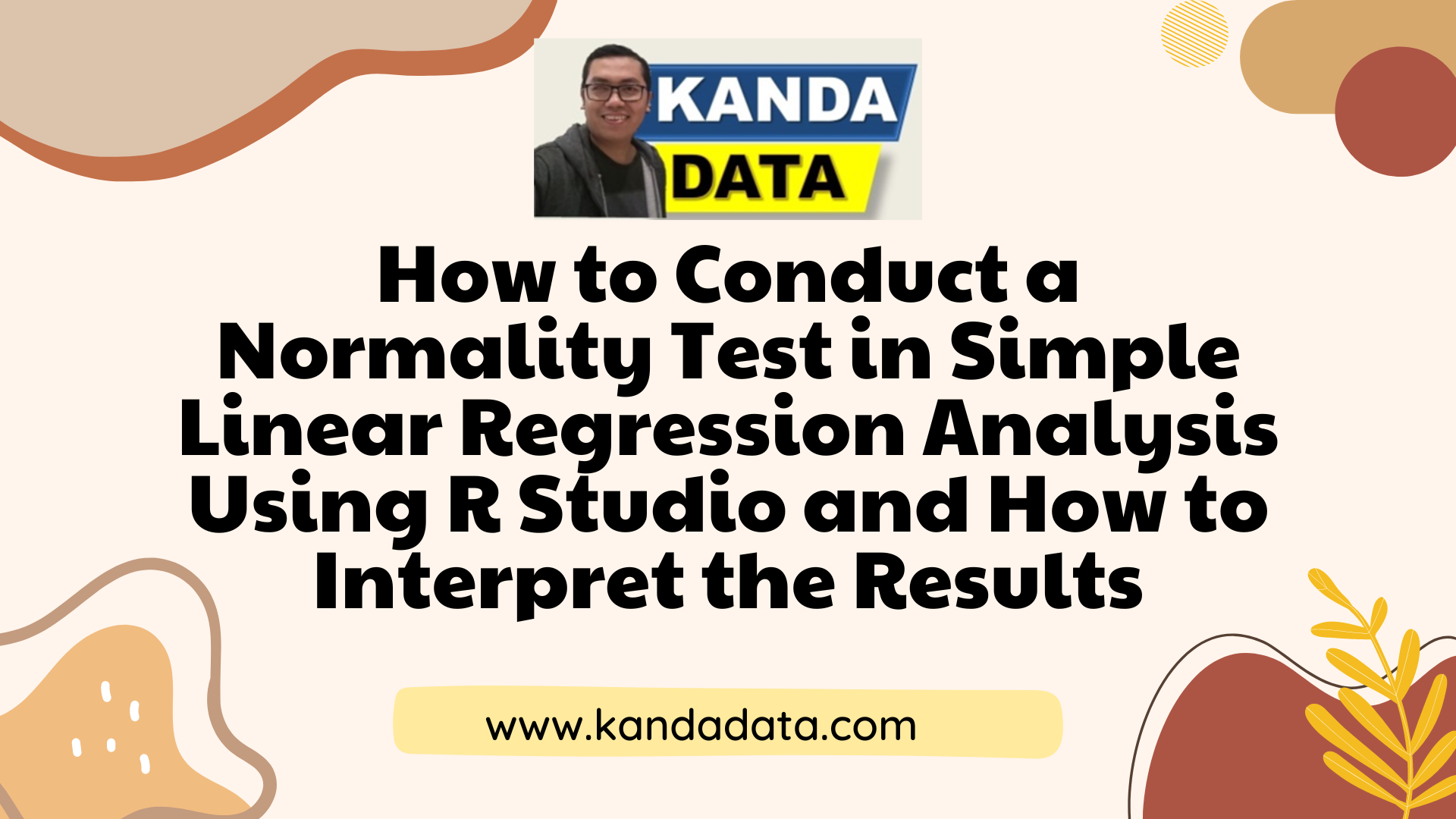Tag: simple linear regression
Understanding the Differences in Using R Squared and Adjusted R Squared in Research
When you choose to use linear regression analysis, it’s essential to master and understand the interpretation of the coefficient of determination. The coefficient of determination is one of the key indicators in linear regression analysis that can be used as a metric to determine the goodness of fit of a regression model.
Calculating Predicted Y and Residual Values in Simple Linear Regression
Residual values in linear regression analysis need to be calculated for several purposes. In linear regression using the ordinary least squares method, one of the assumptions that must be met is that residuals must be normally distributed, hence the necessity to first calculate residual values. However, before calculating the residual values, we need to first calculate the predicted Y values. Therefore, on this occasion, we will discuss how to calculate predicted Y values and residual values.
Calculation Formula for the Coefficient of Determination (R Square) in Simple Linear Regression
The coefficient of determination plays a crucial role in regression analysis. It is not surprising that various studies using regression analysis often present the value of the coefficient of determination. Recognizing the importance of this value, Kanda Data will discuss this topic in detail.
Tutorial on How to Calculate Residual Values in Excel
Regression analysis is already widely used by researchers to explore the influence of independent variables on dependent variables. If we use regression analysis, we must have a good understanding of residual values. These residual values are needed in regression analysis. In addition, in the assumption tests required in linear regression analysis using the ordinary least square method, some also use residual values.
How to Conduct a Normality Test in Simple Linear Regression Analysis Using R Studio and How to Interpret the Results
The Ordinary Least Squares (OLS) method in simple linear regression analysis is a statistical technique aimed at understanding the influence of an independent variable on a dependent variable. In simple linear regression, there is only one dependent variable and one independent variable.
How to Interpret Negative Coefficients of Linear Regression Output
Regression analysis is commonly used by researchers to analyze influence of independent variables on a dependent variable. But what if the estimated regression coefficient turns out to be negative and its influence is significant? In this article, we will explore and review the based on a case study where the estimation coefficient is negative and how to interpret it in an academic context.
Calculating Variance, Standard Error, and T-Statistics in Simple Linear Regression
Statistical hypothesis testing in a study can use the T-statistics in linear regression analysis. The criteria for the acceptance of statistical hypotheses can use a comparison between the T-statistics and the T table or the p-value. Based on the value of T-statistics, a decision can be concluded whether to accept or reject the null hypothesis.
How to Write and Test Statistical Hypotheses in Simple Linear Regression
We need to develop hypotheses when conducting research. A hypothesis is a provisional assumption or statement of the research. The hypothesis needs to be proven, whether true or false, through the research process.






